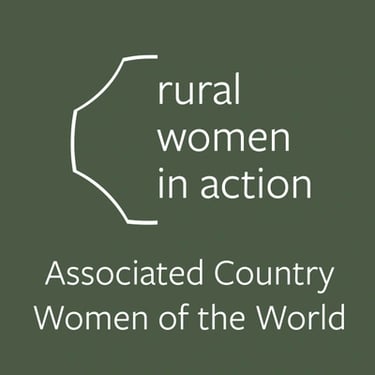About the SWI
The Scottish Women's Institutes is governed by its constitution, originating in 1917 in Longniddry in East Lothian.
The aims of the organisation are to
Build inclusive, diverse communities
Advance education and skills
Provide a platform for social activities and networking
Promote the preservation and development of ur cultural heritage and
Campaign and work with like-minded organisations at home and abroad
Our vision is for all women to find opportunities with the Scottish Women’s Institutes, an internationally recognised and well-respected membership organisation that is ambitious, relevant, and inclusive.
The organisation is managed by a Board of 10 Trustees elected from among the members. The SWI Board, the parent organisation, is a registered Scottish charity.
With its headquarters in Edinburgh, it oversees 29 Federations throughout Scotland and 500 institutes, with a total of 8000 members.


Some of Our History...
The first Women's Institute was formed at Stoney Creek, Ontario, Canada in the year 1897. Its object was to form a society for women comparable with the Society for men known as the Farmers' Institute. Gradually the Movement spread to Europe, the first Institute in Ireland being formed in 1910, in Wales in 1915, with England following soon after, and then in Scotland at Longniddry, East Lothian, in 1917. For the first five years SWRI was run by the Board of Agriculture for Scotland with an Advisory Council of 4 SWRI members, one each from the North West, the North East, Central and South Areas. Organisers were appointed to work in the areas. In 1922 the organisation of the 224 institutes was taken over by the new Central Council, supported by a Treasury grant received through the Board. A Secretary, who was to serve for 30 years, was appointed.
Over the next few years Central Council became stronger, and the movement became self-supporting, except for Treasury grants from the Development Commissioners to Headquarters for Handicrafts, Housewifery, for organisation and development in the Highlands and Islands, grants from the Scottish Education Department for specified purposes, and monies from the Carnegie United Kingdom Trust direct to Federations for tuition in Visual Arts.
The war years curtailed many SWRI activities. The blackout meant monthly meetings being arranged to coincide with moonlight nights. In a few cases they had to be abandoned, but this did not mean silence on the Rural front. The members turned their energies and enthusiasm to the war effort. Those who had attended Schools and obtained Test Certificates helped to teach crafts in isolated camps and hospitals. The Guilds Committee at Headquarters soon organised the distribution of wool for comforts and also arranged for a van to tour the more isolated districts to demonstrate the cooking of home-grown vegetables and the preservation of fruit, both canned and bottled, and to encourage the Grow More Food campaign for small gardens and allotments.
With the end of hostilities, Institutes and Federations gradually returned to normal, and the usual activities were resumed, but to these were added a wider view of community work and interest in local affairs.
On 29th June, 1964, Her Majesty Queen Elizabeth visited SWRI Headquarters. In 1967, the year SWRI celebrated its Golden Jubilee, the organisation was honoured by the presence of Her Majesty and The Duke of Edinburgh at a reception at Ingliston, attended by three members from each Federation. On the morning of the same day the Queen Mother had addressed the Jubilee Conference.
A set of stool tops embroidered by members for the Queen to mark her 25th Wedding Anniversary are housed in the Portrait Gallery of Holyroodhouse. These were repaired and restored by members in 1997, the year of SWRI's 80th birthday, which coincided with the Centenary of the WI movement.
In 1994 SWRI's tartan was designed by Kinloch Anderson, Edinburgh and was launched in 1995 at a ceilidh featuring Jimmy Shand Junior and his band. The history of the SWRI is recalled in past articles from Scottish Home & Country magazine.
For more information about the history of the SWI see the website, theswi.org.uk
For up to date news and future plans see"Changing the Future together: The SWI strategic Plan 2023-2025" on the SWI website.
The vision of the Scottish Women's Institutes is to be known as a vibrant organisation with a growing membership, with every woman in Scotland aware of the SWI.

Site Map
Links of Interest
Follow Us
© 2024. All rights reserved. Scottish Women’s Institutes Dumfriesshire Federation a Registered Scottish Charity Number: SC000759








